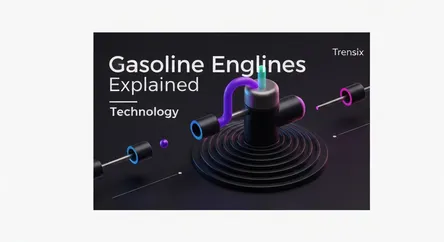Technology
Gasoline Engines Explained

Explore the gasoline engine, the classic internal combustion powerhouse. Learn how it converts fuel into motion and its role in modern transportation.
What is it?
A gasoline engine is a type of internal combustion engine that transforms the chemical energy stored in gasoline into mechanical energy to power a vehicle. The most common design is the four-stroke engine, which completes a cycle of four piston strokes: intake, compression, power, and exhaust. During this process, a mixture of gasoline vapor and air is drawn into a cylinder, compressed by a piston, and ignited by a spark plug. The resulting explosion forces the piston down, turning a crankshaft and ultimately propelling the vehicle's wheels. This process repeats rapidly, generating continuous power.
Why is it trending?
While a century-old technology, the gasoline engine is trending due to the global shift towards electric vehicles (EVs). Discussions are dominated by comparisons of efficiency, emissions, and long-term costs between traditional gasoline engines and electric motors. Governments are setting phase-out dates for gasoline car sales, pushing manufacturers to innovate with more efficient hybrid models or cease internal combustion engine development entirely. This transition makes the technology a focal point in environmental, economic, and automotive news.
How does it affect people?
The gasoline engine revolutionized personal mobility, enabling unprecedented freedom and shaping modern cities and suburbs. It is the backbone of global logistics and personal transportation. However, its widespread use directly affects people through fluctuating fuel prices, which impact household budgets and the cost of goods. Furthermore, its emissions contribute to air pollution and climate change, leading to health concerns and driving the development of stricter environmental regulations and cleaner transportation alternatives.